Types of the Roads or Classification of Roads
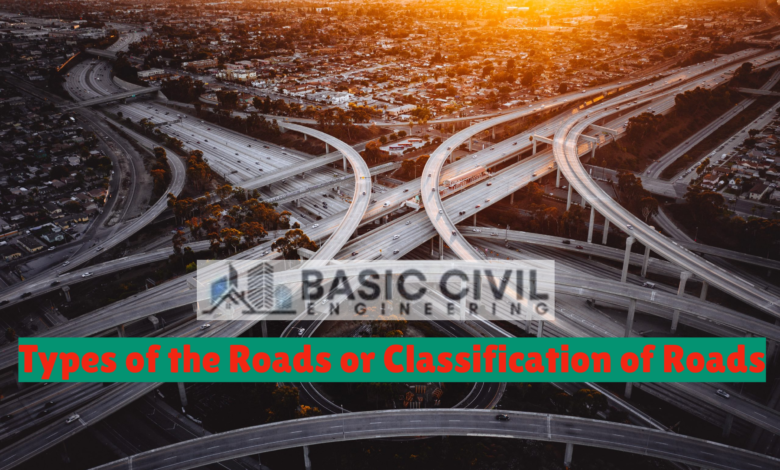
Types of the Roads or Classification of the Roads.
What is the Road?
The road is a paved path, a route, or a highway that allows cars to transport people to their destinations. Roads are categorized using various criteria, which are then further subdivided into various road kinds. I briefly explain each type and term you usually hear when someone talks about roads in this post. These are the main categories for roads:
Out of all of the aforementioned, road classification based on speed, accessibility, and materials used is the most crucial.
Based on the Speed & accessibility:
Freeways:
Highways with access controls are another name for motorways.
Wide, fast-moving cars need motorways to cover greater distances at higher speeds. Typically, these are built with four lanes, two in each way. There are no railway or road intersections, and there are no lights. Thus traffic moves continuously and is uncontrolled on motorways.
As was already established, this sort of road has access controls everywhere, so the motorist never comes into contact with the opposing traffic flow. To keep vehicles off other streets, Only ramps are used to access motorways. Roads that cross motorways need a route to pass. Therefore bridges or underpasses are built.
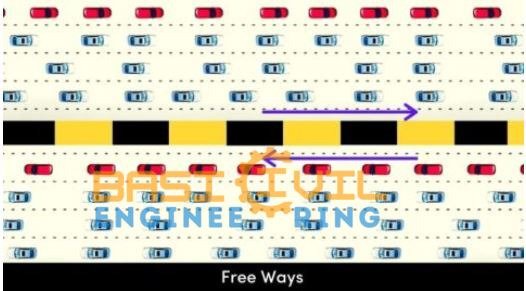
Highways with access controls are another name for motorways.
The above photograph shows that there is no obstacle and that traffic is moving freely in both directions.
Freeways strongly forbid parking and walking, and no pathways are on either side of the road.
Country-by-country variations in the minimum and maximum speed limits range from 45 mph to 75 mph.
Expressways:
Highways with access controls are another name for motorways.
Expressways are one of the best access-controlled roads since ramps control how people enter and leave the motorway.
As implied by the name “express,” these are intended for a free flow of high-speed traffic. Expressways are built to avoid steep curves, congested crossroads, and railroad crossings to move traffic rapidly while maintaining high comfort and safety.
High-acceleration vehicles are only allowed on motorways. Large loads, freight, and people are not permitted.
On motorways, parking, loading, and unloading are forbidden.

Highways with access controls are another name for motorways.
You can easily see that the left-side ramp controlled to the motorway holds access.
Highways:
Highways are the roads that link towns to cities, villages to towns, states to states, or the state capital to the federal capital. The nation is traversed by highways, which span its whole length and breadth. Typically, they are built out in two lanes. National Highways, State Highways, Urban Highways, and Rural Highways are additional highway categories. These types will be covered under the location and function category.

Arterials:
The roadways built inside a city or town to pass heavy traffic are known as arterials. The outlying residential neighborhoods are connected to the central business district via an arterial road. Highways can be reached through arterials.
Only at crossroads or marked pedestrian crossings are pedestrians permitted to cross roads. At intersections, a signaling system regulates the direction of traffic.
Parking is not allowed on the arterial roads.
White and yellow lanes in the figure above indicate arterials.

Local Streets:
Like arterials, local streets don’t carry a lot of traffic. A neighborhood street has a 30 km/h speed limit. You can access nearby houses by using local roads. Said, the local street is the route you must follow to get to the closest vegetable market.

Local streets allow pedestrians to cross the road at any time. Local streets permit unrestricted parking, loading, and unloading of cars. They typically have one m-long dotted white lines or straight white lines instead of dividers with stones.
Read More
-
16 Different Types Of Heavy Machinery Used In The Constructions
-
How to the Plan for Cold Weather Masonry Construction?
-
TYPES OF BUILDING FOUNDATIONS, SELECTION CRITERIA, AND BASIC REQUIREMENTS
-
How to plan the budget for home renovation
-
Differents Types of Beams in Construction
-
How to Prepare Bar Bending Schedule of Slab with Example: A Comprehensive Guide
-
Bar Bending Schedule Formulas: How to Calculate Reinforcement Bar
-
How to Find the Cutting Length of Bent Up Bar in Slab Reinforcement
Collector Roads:
Collector roads gather and deliver traffic to and from neighborhood streets and arterials. Typically, the speed limit is between 35 and 55 km/h.
Only at crossroads are pedestrians permitted to cross the street. Parking is allowed, barring rush hours.

The following graph illustrates the accessibility and speed of several types of roadways.

Based on the Materials used:
I’ll describe various road kinds in this category based on the materials employed in their construction.
Earthen Roads:
Earthen roads are those that are constructed using the site’s existing soil. These are the least expensive highways there exist. Earthen roads are intended for highly light traffic.
The available soil is spread out in two to three layers, and the road’s surface is compacted with a rammer to remove any surplus spaces.

Temporary roads, also known as temporary roads, are typically constructed to move construction equipment while a structure is being built or to move army vehicles during a conflict.
In the monsoon, it is not advised to travel on earthen roads since the soil may wash away during rain.
Gravel roads:
Gravel roads are better than earthen roads and are the second cheapest of all the many types of roads.
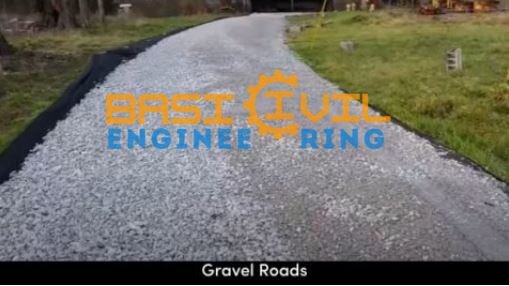
The surface of these roadways is paved with a mixture of gravel and dirt (the site’s available soil). Metal roads are another name for gravel roads. These roads can be easily constructed and are typically developed in settlements.
Murram Roads:
A gravelly lateritic substance called murram is created when weathering forces break down igneous rocks. Murram roads are those that are constructed with this material as their main component. Compared to the previous two types of roads, murram has a better surface quality and compaction because of its higher density than gravel.

Kankar Roads:
The word “Kankar,” which indicates an impure kind of limestone, originated from India. This kind of road is typically advised in areas with a lot of lime. Kankar Road is subpar, yet it is better than gravel and earthen roads.
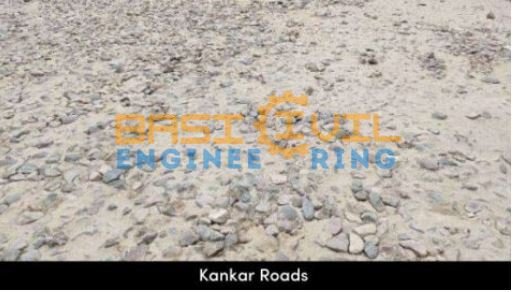
Water bound Macadam Roads [WBM]:
WBM Road is another name for this kind of road. As a base course, crushed stone (aggregate) is employed. Layers are used to lay WBM roadways. To get a superior finish, water is sprinkled on each layer of aggregate after it has been spread out to a thickness of 10 cm.
These roads are superior to the Kankar, Murram, and Earth roads.
WBM is typically put in pit holes in urban areas.

Bituminous roads:
During the distillation of gasoline, a dark, dense, and sticky substance called bituminous material formed. The majority of roads in use across the world are made of bituminous material because it is simple to install and gives an excellent surface finish. The subgrade soil at the site determines the bitumen road’s thickness. The bitumen roads should always be laid in two layers.

Concrete roads:
Concrete roads are those that are constructed out of cement concrete. Among all road types, these are the priciest roads. This type of road is advised in areas with heavy traffic because it takes longer to build concrete roads because they need to cure properly. A concrete highway typically lasts 40 years, while a bituminous road only lasts 3 years on average.

Based on Nagpur classification:
India has a city with the name of Nagpur. The Nagpur categorization is used extensively throughout the world. Let’s talk about the many road types according to the Nagpur classification.
National highways:
Both the length and breadth of the nation are covered by national highways. The national capital city is connected to the state capital cities via these highways. National highways must have a minimum of two lanes, one in each direction, and a strip of boulders separates these two lanes.
On national highways, a minimum speed of 80 Kmph should be maintained. These typically have the numbers NH1, and NH70 on them.

State highways:
State Roads link the state’s major cities with the state capital. State highways provide access to national highways. Also, they have connections to the state highways in the states next to them.
There are at least two lanes available, albeit they might or might not be separated by a strip of stones.
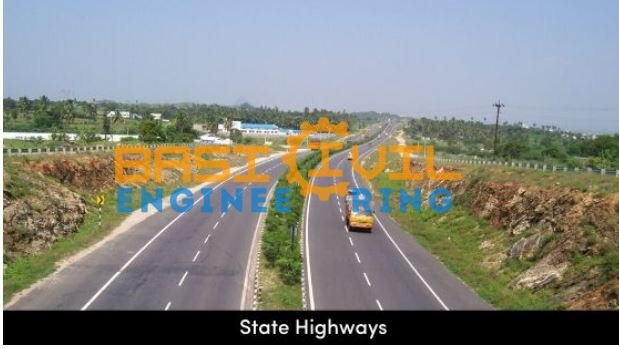
District roads
Access is provided to connect to the state highways via district roads. District roads link the district’s key towns together and relate to nearby district roads.
District roads are of two different types.
Main District Roads: These roads link to the adjacent district administrative centers.
Minor District Roads: These highways link the district’s major towns with the district’s administrative center.
Village roads or Rural roads:
The roadways in villages are known as village roads. These roads connect the villages’ key locations, such as churches and temples, with the nearest town. Village roads likewise connect the neighboring villages.

Based on usage:
All-Weather roads:
These are the so-called all-weather roads, which are accessible all year long.
Fair-weather roads:
Fairweather roads can only be traveled when the weather is clear. Certain roads are only open in the summer, and the rest of the year, they are closed owing to snow accumulation. When it rains heavily, when there are storms, or when there are floods, certain roads are impassable.

You can observe that only during the summer is traffic allowed on the aforementioned route.
Based on Carriageway
Paved Roads :
Paved roads are those that are constructed with a hard surface, such as cement concrete, bituminous, or WBM.

Unpaved roads:
Unpaved roads are those that were not intended to have a hard surface, such as Kankar, Earthen, or Murram.

Based on Rigidity:
Flexible Roads:
The flexible road has four layers: a sub-base, base, and subgrade course beneath the bituminous wearing course covering the outer surface layer. The road is flexible, thanks to all these layers. Flexible roads need regular upkeep otherwise they can easily collapse under the weight of heavy traffic.
All roads, with the exception of cement and concrete ones, are flexible.

Rigid roads:
These are the roads that are rigid since there are only three layers: the surface course, base course, and subgrade course. Roads made of cement and concrete fall under this category.
Flexible layers serve as the pavement surface of flexible roads, which must be properly maintained or else heavy traffic could easily cause them to dissolve. This category includes all sorts of roadways aside from concrete ones.

Based on topography:
In terms of topography, there are two categories for roads: hilly roads and plain roads.
Hilly roads:
Roads built on hilly terrain frequently have sharp turns, ascents, and descents. Compared to simple streets, more money is needed, and the process takes longer.
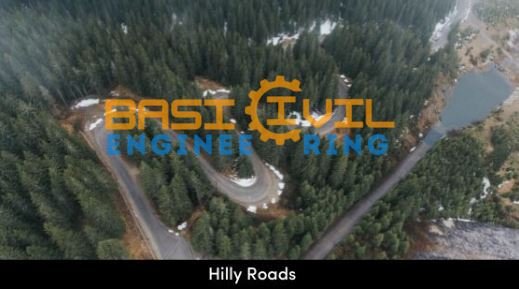
Plain area roads:
Plain region roads are those that are built on flat terrain with few curves, ascents, and descents. Planning and execution take less time than on the highways in the plains.

Based on the economy:
Low-cost roads:
Low-cost roads are those that can be built using the local soil or other materials that are readily available while requiring less capital. These roadways are preferred in areas with little or no foot activity.
Medium cost roads:
Compared to low-cost roads, medium-cost roads take more money to build. One illustration of a medium-cost road is the route between the village and the closest town. When there is occasionally heavy traffic, certain roads are taken into account. Bitumen is typically used to construct these roads.
High-cost roads:
The cost of building these roads is exceptionally high. The best examples of expensive roadways are state and federal highways. In expensive streets, bitumen or cement concrete is used.
Based on the Volume of traffic:
This categorization is based on the volume of traffic that passes through a particular route.
Low traffic roads:
Low traffic routes are those that carry, on average, fewer than 400 vehicles every day. The best examples of this kind of road are those found in villages or rural areas.
Medium traffic roads:
Roads with a daily average traffic volume of 400 to 1000 vehicles are referred to as medium traffic roads. Roads in districts are one of them.
High traffic roads:
Roads with a daily traffic volume of more than 1000 vehicles are referred to as high traffic roads. This category includes both national and state roadways.
Based on the traffic type:
Cycle tracks:
Cycle tracks are the tracks created specifically for bicycles or cycles. Both sides of the pavement are equipped with these tracks.
Pedestrian ways:
The term “pedestrian way” refers to a path or route created especially for pedestrians where all vehicular traffic is strictly prohibited.
Motorways:
Motorways are expressways designed for the unrestricted flow of high-speed traffic. Expressways are built to avoid steep curves, congested crossroads, and railroad crossings to move traffic rapidly while maintaining a high level of comfort and safety. On expressways, heavy-duty vehicles are prohibited.




